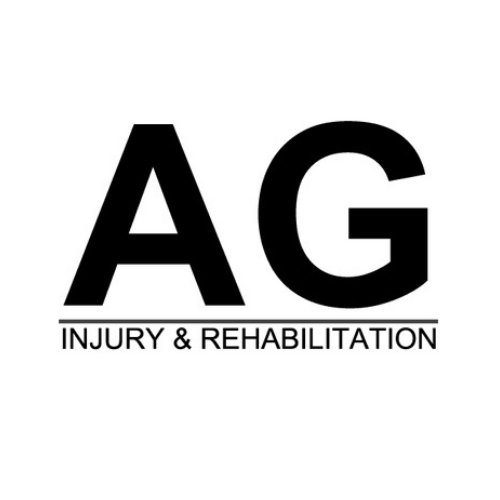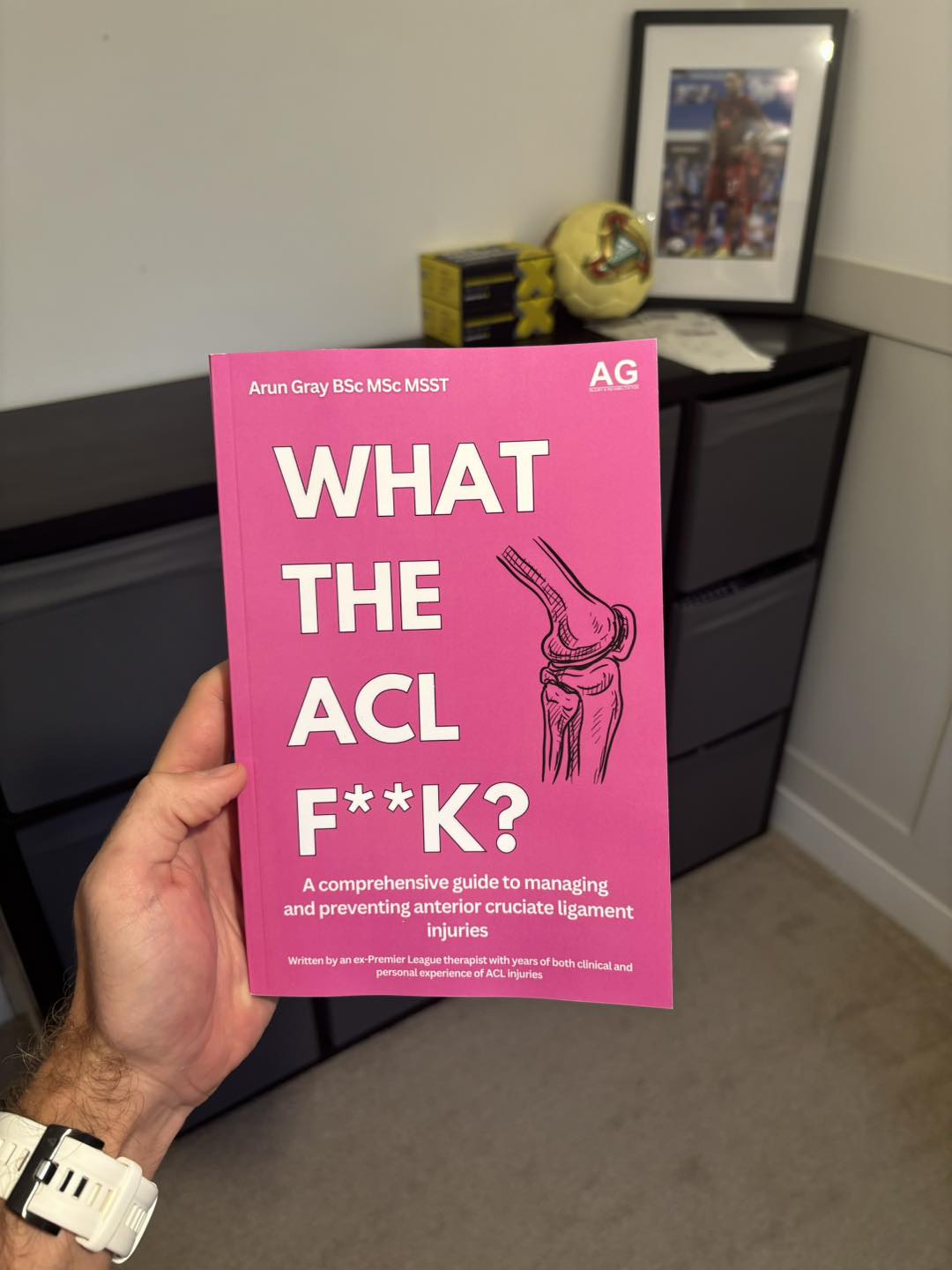Every 60 seconds, someone in the United States suffers an ACL injury, making it one of the most common knee injuries in sports and active lifestyles. This tiny but mighty ligament, no thicker than your pinky finger, plays a crucial role in keeping your knee stable during everyday movements.
Understanding ACL ruptures has become increasingly important as more people stay active throughout their lives. From weekend warriors to professional athletes, the impact of this injury reaches far beyond the playing field, affecting millions of people each year and leading to significant advances in treatment and rehabilitation approaches.
What is the ACL?
The Anterior Cruciate Ligament (ACL) stands as a vital stabilizing structure within the kneejoint. This key ligament connects the thighbone (femur) to the shinbone (tibia), working to prevent excessive forward movement of the tibia while limiting rotational movements of the knee.
Located inside the knee joint, the ACL forms an X-shaped configuration with the posterior cruciate ligament. The ligament runs in a forward, inward, and downward direction across the joint space, taking a slight spiral turn toward the outer side as it extends.
The ACL plays an essential role in knee stability during daily activities and sports. It acts as a primary restraint, keeping the knee joint properly aligned during movements like walking, running, and jumping. Without proper ACL function, the knee can become unstable, making it difficult to perform basic movements and increasing the risk of additional knee injuries.
Causes and Mechanisms of ACL Ruptures
ACL ruptures often occur during sports activities, particularly in football, basketball, and soccer. The most common mechanism involves sudden changes in direction or quick stopping movements while running. When athletes pivot or make cutting maneuvers at high speeds, the excessive force can tear the ligament.
Landing incorrectly from jumps puts significant stress on the ACL. This happens frequently in sports like volleyball and basketball, where the knee twists while bearing the full weight of the body. Direct contact to the knee, such as tackles in football or collisions in skiing, can also lead to ACL tears.
Beyond sports, ACL injuries happen in work settings and car accidents. These situations can create similar forces on the knee as athletic activities. The severity of ACL damage ranges from minor sprains to complete tears, with more forceful impacts typically causing more extensive injury. Most complete ACL tears result from non-contact movements where the knee experiences a combination of twisting and forward forces.
Risk Factors for ACL Injuries
Athletes face a higher chance of ACL tears, especially those who play sports requiring quick direction changes and sudden stops. Women who play sports have a notably higher injury rate than men, particularly in activities like soccer and basketball. This gender difference stems from factors including differences in muscle strength and knee alignment.
Physical condition plays a major role in injury risk. Poor muscle strength, limited flexibility, and reduced fitness levels increase the chances of ACL injury requiring surgery. Strong legs, hips, and core muscles help protect the knee during high-stress movements.
Some people may carry genetic traits that affect their ACL injury risk. These inherited factors can influence ligament strength, joint structure, and overall knee mechanics. Family history of ACL tears might point to shared anatomical features that make injuries more likely.
Body mechanics during movement also affect risk levels. Athletes who land from jumps with straight knees or who play with poor technique put extra stress on their ACLs. Regular training in proper movement patterns can help reduce these mechanical risk factors.
Symptoms of an ACL Rupture
Most people who tear their ACL hear or feel a distinct "pop" in their knee at the moment of injury. This sound often signals serious damage to the ligament. Within 24 hours, the knee typically swells significantly due to bleeding inside the joint.
Pain ranges from moderate to severe, becoming particularly noticeable when putting weight on the injured leg. Many patients report feeling their knee "give way" during attempts to walk or stand. This instability makes it hard to trust the injured leg for basic movements.
The range of motion in the affected knee becomes limited as swelling increases. Most people cannot continue their activity after the injury occurs, and walking becomes difficult without support. These signs point to potential ACL damage, though similar symptoms can appear with other knee injuries. Quick recognition of these warning signs allows for faster medical attention, which can lead to better treatment outcomes.
Diagnosis of ACL Injuries
Doctors start the diagnostic process with a hands-on physical exam. The Lachman test stands as the most accurate physical test, where the doctor checks how much the tibia moves forward compared to the femur. The pivot shift test adds information by checking the knee's rotational stability.
Medical imaging gives a clear picture of ACL damage. MRI scans and diagnostic tests show both the ligament tear and any injury to surrounding knee structures like menisci or other ligaments. X-rays, while not showing the ACL directly, help rule out bone breaks that can happen during the injury.
Doctors grade ACL injuries on a three-level scale based on severity. Grade 1 involves mild ligament damage with slight stretching but intact stability. Grade 2 indicates a partial tear with some remaining fibers intact. Grade 3, the most severe, represents a complete tear that splits the ligament into two pieces. This grading helps determine the most appropriate treatment path, whether conservative management or surgical repair.
Non-Surgical Treatment Options
Initial treatment for ACL tears starts with the RICE method - rest to prevent further injury, ice to reduce swelling, compression wraps to limit swelling, and elevation of the leg above heart level. This approach helps manage pain and inflammation in the first few days after injury.
Physical therapy forms the backbone of non-surgical treatment options. Therapists guide patients through exercises to strengthen leg muscles, particularly the quadriceps and hamstrings. These muscles help make up for the injured ligament by providing added knee stability. Range-of-motion exercises keep the joint flexible while reducing stiffness.
Non-surgical approaches work best for partial ACL tears or for people who plan to avoid high-impact activities. Older adults and those with sedentary lifestyles often do well without surgery. Activity changes, like switching from basketball to swimming, combined with regular physical therapy, can help maintain knee function. Some patients use knee braces during activities for extra support, though braces alone cannot prevent knee instability.
Surgical Treatment Approaches for ACL Reconstruction
ACL reconstruction stands as the standard surgical fix for complete tears, especially in athletes and active individuals. The procedure replaces the torn ligament with a tissue graft, which can come from the patient's own body (autograft) or from a donor (allograft).
Common autograft sources include the patellar tendon, hamstring tendon, and quadriceps tendon. Each option has specific benefits - patellar tendon grafts offer strong fixation points, while hamstring grafts often cause less pain at the donation site. The choice depends on factors like the patient's activity level and age.
Most surgeons perform ACL tear treatment through small incisions using arthroscopic techniques. This method reduces scarring and speeds up recovery compared to traditional open surgery. During the procedure, the surgeon removes the damaged ligament, drills tunnels in the femur and tibia, and secures the new graft in place.
Success rates for ACL surgery remain high, with most patients returning to sports within 6-9 months. However, the procedure carries risks like infection, blood clots, and stiffness. Careful pre-operative planning and choosing the right graft type help minimize these complications.
Recovery and Rehabilitation Process
After ACL treatment, patients follow a structured recovery program that typically spans 6-9 months. The process starts with controlling pain and swelling while working to regain basic knee motion. Early exercises focus on gentle knee bending and straightening movements.
The next phase builds strength through targeted exercises for the quadriceps, hamstrings, and hip muscles. Physical therapists guide patients through specific movements to restore balance and position awareness in the knee joint. As strength improves, patients add more complex exercises like squats and lunges.
Around the 3-month mark, most patients begin light running and agility drills. Sports-specific training starts around 4-6 months, with gradual progression based on strength and stability tests. Return to full sports participation requires passing physical tests that measure jumping, running, and cutting abilities.
Success rates depend heavily on following the rehabilitation plan. Skipping steps or rushing recovery increases the risk of re-injury. Most patients who stick to their program can return to their previous activity levels, though some may need to modify high-risk movements.
Long-Term Prognosis and Potential Complications
Most people who experience ACL tears face an increased risk of knee osteoarthritis later in life, even with successful treatment. Studies show changes in joint surfaces can start within 10 years of the initial injury, leading to pain and stiffness as patients age.
The quality of life after ACL injury requiring surgery varies based on several factors. Patients who follow their rehabilitation programs often return to regular activities without major limitations. However, some individuals may need to adjust their exercise routines or sports participation to protect their knees.
Re-injury remains a concern, particularly in the first year after treatment. About 15% of patients experience a second ACL tear, either in the same knee or the opposite one. This risk increases in young athletes who return to high-impact sports.
Physical therapy compliance plays a key role in long-term outcomes. Patients who maintain their exercise programs and follow activity guidelines report better knee function and fewer complications. Regular check-ups with healthcare providers help catch and address potential issues early, improving long-term joint health.
Prevention Strategies for ACL Injuries
Training programs focusing on neuromuscular control help reduce ACL injury rates. These programs teach athletes how to land properly from jumps, control their movements during quick direction changes, and maintain good body position during sports activities.
Strong muscles support and protect the knee joint. Regular strength training for legs helps create better joint stability. Athletes should focus on exercises that build balanced muscle strength, particularly in the quadriceps and hamstrings.
Proper movement patterns matter during sports and exercise. Athletes learn to keep their knees aligned over their feet when jumping and landing, avoid letting knees collapse inward during squats, and maintain good form during quick stops and turns. Video analysis helps coaches spot and correct risky movement habits.
Some athletes choose to wear protective knee braces, though research shows mixed results about their effectiveness. While braces might offer some support, they don't replace good technique and conditioning. Regular screening can identify athletes at higher risk, allowing for targeted prevention efforts.
The Path Forward After ACL Rupture
Despite the challenges an ACL rupture presents, modern medicine offers numerous effective treatment options tailored to individual needs and lifestyle goals. Whether choosing conservative management or surgical reconstruction, successful outcomes depend largely on patient dedication to rehabilitation and following medical guidance.
The future looks promising for ACL injury treatment, with ongoing research into prevention strategies and improved surgical techniques. While complete prevention may not be possible, understanding risk factors and taking proactive steps can significantly reduce the likelihood of injury and improve recovery outcomes.

